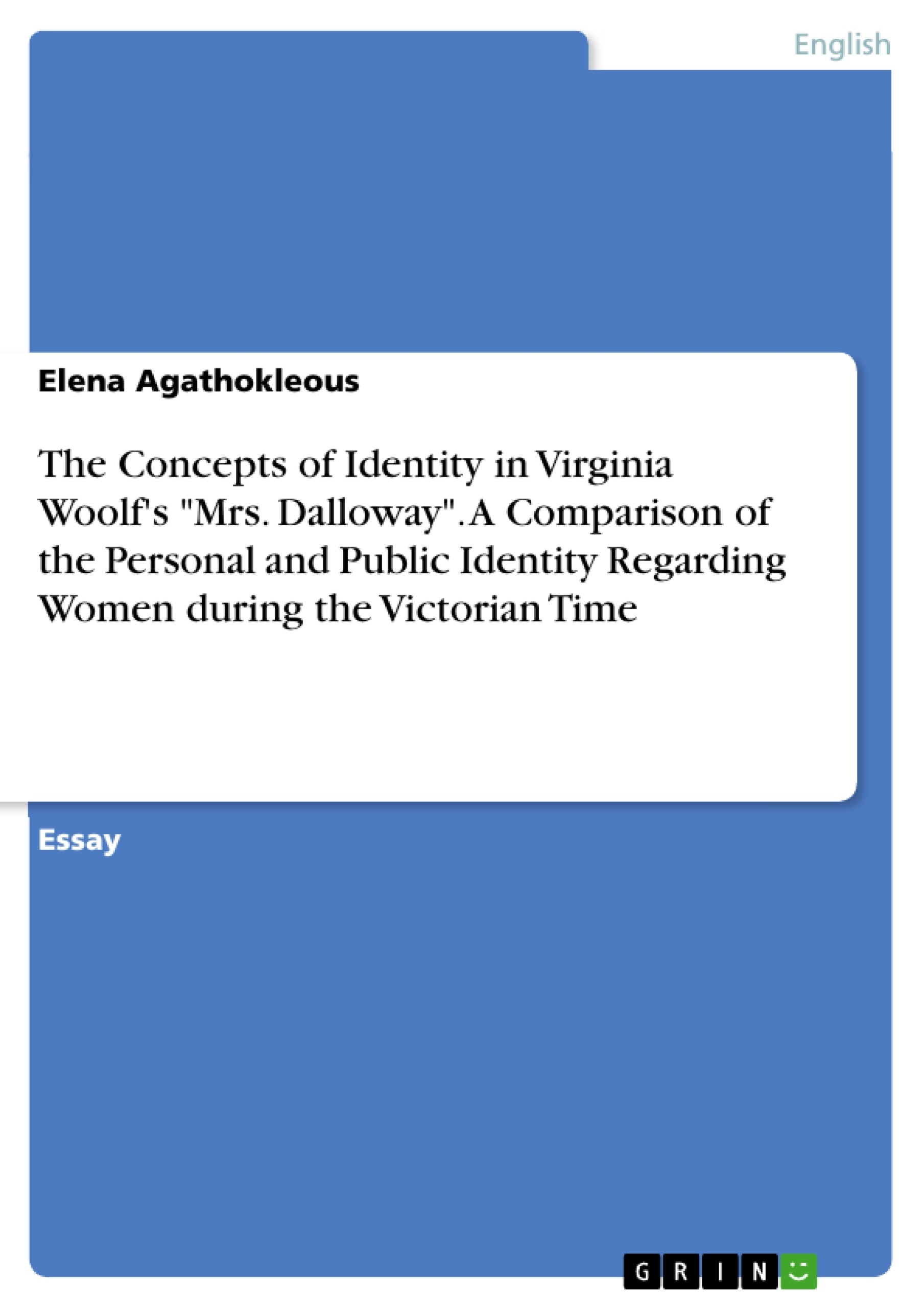This essay deals with the personal and public identity in Virginia Woolf's novel "Mrs. Dalloway".
The concept of identity is one that can be given many interpretations and meanings according to relevant components and aspects taken into consideration. In this frame a severance between personal and social identity can be made, referring both to the individual’s self but also the individual’s social identity related to social conduct and aiming toward an accepted and well projected social self.
Clarissa Dalloway serves as a very clear example of that struggle between personal and public identity and especially regarding women of the Victorian time, who by oppressing their true self, aspirations, feelings and wits were allowed to fit in the stereotypical role that society assigned to women.
Inhaltsverzeichnis (Table of Contents)
- Dissolution of Personal Identity VS Construction of Public Identity
- Clarissa Dalloway: A Struggle for Identity
- The Impact of Historical Context
- The Choice of Marriage and the Formation of Public Identity
- Clarissa's Choice and its Consequences
- The Devastating Consequences of Non-Conformity
Zielsetzung und Themenschwerpunkte (Objectives and Key Themes)
This essay explores the complex interplay between personal and public identity in Virginia Woolf's novel, *Mrs. Dalloway*. It examines how societal pressures, particularly during the Victorian era, can lead to the dissolution of individual identity in favor of a constructed, socially acceptable persona.
- The impact of societal expectations on individual identity
- The struggle between personal desires and societal norms
- The consequences of conformity and non-conformity
- The role of gender and marriage in shaping identity
- The influence of historical and political context on individual experience
Zusammenfassung der Kapitel (Chapter Summaries)
The essay begins by introducing the concept of identity as a complex and multifaceted construct, highlighting the tension between personal and social identity. It then uses the character of Clarissa Dalloway to illustrate this struggle, examining how her desire to conform to societal expectations leads to the suppression of her true self.
The essay then delves into the historical context of the novel, focusing on the impact of the First World War and the changing social landscape of Victorian England. It explores how societal pressures, including the emphasis on class, gender roles, and the need for stability, contributed to the construction of public identities.
The essay further examines Clarissa's decision to marry Richard Dalloway, analyzing her motivations and the consequences of this choice for her personal identity. It highlights her internal conflicts and doubts, as well as the societal pressures that shaped her decision.
Finally, the essay explores the fate of Septimus Smith, a character who represents the extreme consequences of non-conformity. Septimus's inability to conform to societal norms leads to his mental breakdown, demonstrating the dangers of suppressing one's true self.
Schlüsselwörter (Keywords)
The essay focuses on the keywords and concepts of identity, personal identity, public identity, societal pressures, conformity, non-conformity, gender roles, marriage, historical context, and Victorian era. The analysis delves into the intersection of these themes as they shape the individual experiences of Clarissa Dalloway and Septimus Smith in *Mrs. Dalloway*.
- Quote paper
- Elena Agathokleous (Author), 2018, The Concepts of Identity in Virginia Woolf's "Mrs. Dalloway". A Comparison of the Personal and Public Identity Regarding Women during the Victorian Time, Munich, GRIN Verlag, https://www.grin.com/document/995909




